#Pemberton Medicine Company
Explore tagged Tumblr posts
Text






















The Coca-Cola Company, then known as the Pemberton Medicine Company, was incorporated in Atlanta on January 15, 1889.
#Wigwam Village Inn 2#Cave City#Kentucky#Coca-Cola Company#Pemberton Medicine Company#incorporated#Atlanta#15 January 1889#anniversary#US history#soft drink#Georgia#vacation#Centennial Olympic Park#World of Coca-Cola#original photography#USA#summer 2016#tourist attraction#landmark#architecture#cityscape#Gott's Roadside#St. Helena#California#John Pemberton by Russ Faxon#Paradise#Las Vegas Strip#travel
3 notes
·
View notes
Text
Events 1.15 (before 1950)
69 – Otho seizes power in Rome, proclaiming himself Emperor of Rome, beginning a reign of only three months. 1541 – King Francis I of France gives Jean-François Roberval a commission to settle the province of New France (Canada) and provide for the spread of the "Holy Catholic faith". 1559 – Elizabeth I is crowned Queen of England and Ireland in Westminster Abbey, London. 1582 – Truce of Yam-Zapolsky: Russia cedes Livonia to the Polish–Lithuanian Commonwealth. 1759 – The British Museum opens to the public. 1777 – American Revolutionary War: New Connecticut (present-day Vermont) declares its independence. 1782 – Superintendent of Finance Robert Morris addresses the U.S. Congress to recommend establishment of a national mint and decimal coinage. 1815 – War of 1812: American frigate USS President, commanded by Commodore Stephen Decatur, is captured by a squadron of four British frigates. 1818 – A paper by David Brewster is read to the Royal Society, belatedly announcing his discovery of what we now call the biaxial class of doubly-refracting crystals. On the same day, Augustin-Jean Fresnel signs a "supplement" (submitted four days later) on reflection of polarized light. 1822 – Greek War of Independence: Demetrios Ypsilantis is elected president of the legislative assembly. 1865 – American Civil War: Fort Fisher in North Carolina falls to the Union, thus cutting off the last major seaport of the Confederacy. 1867 – Forty people die when ice covering the boating lake at Regent's Park, London, collapses. 1870 – A political cartoon for the first time symbolizes the Democratic Party with a donkey ("A Live Jackass Kicking a Dead Lion" by Thomas Nast for Harper's Weekly). 1876 – The first newspaper in Afrikaans, Die Afrikaanse Patriot, is published in Paarl. 1889 – The Coca-Cola Company, then known as the Pemberton Medicine Company, is incorporated in Atlanta. 1892 – James Naismith publishes the rules of basketball. 1908 – The Alpha Kappa Alpha sorority becomes the first Greek-letter organization founded and established by African American college women. 1910 – Construction ends on the Buffalo Bill Dam in Wyoming, United States, which was the highest dam in the world at the time, at 99 m (325 ft). 1911 – Palestinian Arabic-language Falastin newspaper founded. 1919 – Rosa Luxemburg and Karl Liebknecht, two of the most prominent communists in Germany, are clubbed and then shot to death by members of the Freikorps at the end of the Spartacist uprising. 1919 – Great Molasses Flood: A wave of molasses released from an exploding storage tank sweeps through Boston, Massachusetts, killing 21 and injuring 150. 1934 – The 8.0 Mw Nepal–Bihar earthquake strikes Nepal and Bihar with a maximum Mercalli intensity of XI (Extreme), killing an estimated 6,000–10,700 people. 1936 – The first building to be completely covered in glass, built for the Owens-Illinois Glass Company, is completed in Toledo, Ohio. 1937 – Spanish Civil War: Nationalists and Republicans both withdraw after suffering heavy losses, ending the Second Battle of the Corunna Road. 1943 – World War II: The Soviet counter-offensive at Voronezh begins. 1943 – The Pentagon is dedicated in Arlington County, Virginia. 1947 – The Black Dahlia murder: The dismembered corpse of Elizabeth Short was found in Los Angeles. 1949 – Chinese Civil War: The Communist forces take over Tianjin from the Nationalist government.
0 notes
Text
youtube
On May 8, 1886, the world witnessed a quiet but groundbreaking moment in beverage history. Dr. John Stith Pemberton, an Atlanta-based pharmacist, introduced a syrup that would become the foundation of Coca-Cola, one of the most iconic drinks of all time. This first glass was served at Jacobs’ Pharmacy in downtown Atlanta, marking the beginning of a brand that would go on to captivate the globe.
In this blog, we explore the fascinating origin of Coca-Cola, its features, and the factors behind its rise to worldwide fame.
Coca-Cola’s Historic Debut
Jacobs’ Pharmacy: On that fateful day, Jacobs’ Pharmacy became the birthplace of Coca-Cola. This popular Atlanta pharmacy served as both a soda fountain and a hub for social interactions.
Dr. John Pemberton’s Vision: Dr. Pemberton envisioned creating a beverage that was both medicinal and enjoyable. Coca-Cola was initially promoted as a health tonic, claiming to relieve headaches and fatigue.
Affordable Pricing: The first glass of Coca-Cola sold for just five cents. This affordable price made the drink accessible to a wide audience, setting the stage for its popularity.
Features of the Original Coca-Cola
Unique Recipe:
A blend of coca leaf extract and kola nut provided the drink’s caffeine content.
The addition of sugar and natural flavors balanced its taste.
Carbonated water gave it its signature fizz.
Health Claims: Coca-Cola was marketed as a brain tonic and remedy for ailments like indigestion and exhaustion.
Distinct Branding:
The name "Coca-Cola" was suggested by Pemberton’s bookkeeper, Frank Robinson, who also hand-designed the logo.
The logo’s cursive script remains a hallmark of the brand to this day.
Handcrafted Syrup: Every batch of syrup was personally made by Dr. Pemberton in his small laboratory.
Jacobs’ Pharmacy: The Launchpad
Jacobs’ Pharmacy played a pivotal role in Coca-Cola’s story:
First Retailer: As the first location to sell Coca-Cola, Jacobs’ Pharmacy introduced the drink to Atlanta locals.
Social Hub: The pharmacy’s soda fountain drew a steady stream of customers who became the first Coca-Cola enthusiasts.
Word of Mouth: Patrons began spreading the word about this refreshing new drink, creating organic buzz.
Coca-Cola’s Evolution: From Local Beverage to Global Brand
Humble Beginnings:
Coca-Cola sold only nine glasses per day on average during its first year.
Financial difficulties led Dr. Pemberton to sell parts of the company to investors.
Asa Candler’s Vision:
In 1888, Asa Candler purchased full ownership of Coca-Cola for $2,300.
He implemented strategic marketing initiatives, turning Coca-Cola into a household name.
Innovative Marketing Strategies:
Free sample coupons introduced the drink to new customers.
Slogans like "Delicious and Refreshing" highlighted Coca-Cola’s unique flavor and appeal.
Bottling Revolution:
In 1899, Coca-Cola began bottling operations, making the drink more accessible and portable.
This move marked a significant step toward the brand’s global expansion.
International Reach:
Coca-Cola entered international markets in the early 1900s, starting with Canada, Cuba, and Panama.
Its universal appeal helped it transcend cultural and geographical boundaries.
What Makes Coca-Cola Unique?
Secret Formula:
Known as "Merchandise 7X," the formula for Coca-Cola remains a tightly guarded secret.
This mystery enhances its allure and sets it apart from competitors.
Contour Bottle Design:
Introduced in 1915, the Coca-Cola bottle’s iconic shape ensures instant recognition.
Its unique design is both functional and symbolic of the brand’s identity.
Timeless Branding:
The Coca-Cola logo and red-and-white color scheme have remained largely unchanged for over a century.
This consistency strengthens its global brand recognition.
Emotional Connection:
Coca-Cola’s marketing often focuses on happiness, togetherness, and celebration.
These themes create a strong emotional bond with consumers worldwide.
Coca-Cola’s Cultural Significance
A Reflection of the Times: Coca-Cola evolved from a temperance drink to a symbol of joy, adapting to societal changes while maintaining its essence.
Global Icon: From Christmas advertising featuring Santa Claus to sponsoring major sports events, Coca-Cola is a cultural ambassador.
Pop Art Inspiration: Artists like Andy Warhol celebrated Coca-Cola in their work, highlighting its role as a cultural touchstone.
Fun Facts About Coca-Cola
First Soda in Space: Coca-Cola was the first soda consumed in space, showcasing its innovative spirit.
Ubiquitous Brand: The Coca-Cola logo is recognized by 94% of the world’s population.
Santa Claus Connection: Coca-Cola’s Christmas campaigns helped popularize the modern image of Santa Claus in red and white.
Original Bottle Design: The early Coca-Cola bottles were made in a greenish hue called "Georgia Green."
Legacy of May 8, 1886
Global Reach: Coca-Cola is now sold in over 200 countries, with 1.9 billion servings consumed daily.
Economic Impact: The company’s growth has spurred innovation and created jobs in diverse industries.
Enduring Inspiration: Coca-Cola’s journey shows how vision, innovation, and perseverance can transform an idea into a global phenomenon.
Lessons from Coca-Cola’s Story
Start Small, Dream Big: Dr. Pemberton’s modest syrup creation became a cultural and commercial giant.
The Power of Marketing: Asa Candler’s strategic advertising propelled Coca-Cola to global success.
Adaptability Matters: Coca-Cola’s ability to evolve with changing markets and trends ensures its enduring popularity.
Conclusion
The first glass of Coca-Cola, poured at Jacobs’ Pharmacy on May 8, 1886, was more than just a drink—it was the beginning of a legacy. What started as a simple syrup in Atlanta has grown into a symbol of joy, celebration, and connection worldwide.
As you enjoy your next Coca-Cola, remember its remarkable journey. From Dr. Pemberton’s small laboratory to the hands of billions, every sip is a reminder of the power of innovation and vision.
Go To The Historical Milestone: May 8, 1886
#coca-cola history#john pemberton#jacobs pharmacy#1886 coca-cola#coca-cola origins#atlanta beverage history#first coca-cola#coca-cola branding#coca-cola marketing#iconic beverages#soda fountain history#global beverage brands#coca-cola secret formula#contour bottle design#coca-cola cultural impact#Youtube
0 notes
Text
Unveiling the Icon: Exploring the Timeless Charm of Coca-Cola's Original Taste
Coca-Cola, an enduring symbol of refreshment and enjoyment, has captivated the taste buds of millions for over a century. With its distinctive red label and effervescent fizz, the iconic beverage continues to hold a special place in the hearts of consumers worldwide. This article delves into the timeless charm of Coca-Cola's original taste, tracing its origins, understanding its secret formula, and exploring the reasons behind its enduring popularity.
The Origins of Coca-Cola: Coca-Cola traces its roots back to 1886 when pharmacist John Pemberton created a unique concoction in Atlanta, Georgia. Originally intended as a medicinal tonic, Pemberton's creation soon gained popularity for its refreshing qualities. It was named "Coca-Cola" due to its key ingredients: coca leaves and cola nuts, giving it a distinct flavor profile.
The Secret Formula: One of the intriguing aspects of Coca-Cola is its closely guarded secret formula. Known only to a few individuals at any given time, the formula has remained unchanged for decades. It blends a harmonious mix of natural flavors, including citrus oils, cinnamon, vanilla, and caramel, to achieve the beverage's unmistakable taste. The precise combination and proportion of these ingredients are what makes Coca-Cola a truly unique and beloved drink.
Crafting the Perfect Balance: The allure of Coca-Cola's original taste lies in its delicate balance of flavors. The tangy notes of citrus complement the subtle spice of cinnamon, while hints of vanilla and caramel provide a smooth and comforting undertone. The harmonious fusion of these elements creates a taste that is simultaneously refreshing, crisp, and nostalgic—a true testament to the beverage's enduring charm.
Cultural Significance: Beyond its taste, Coca-Cola's original formula has become embedded in popular culture. The iconic red and white branding has graced billboards, television screens, and the silver screen, becoming synonymous with happiness, togetherness, and celebration. From its memorable advertisements to its association with festive occasions, Coca-Cola has established a unique place in our collective consciousness.
Evolving with the Times: While Coca-Cola's original taste has remained consistent, the company has adapted to changing consumer preferences over the years. This has led to the introduction of various flavor variants, such as Diet Coke, Coca-Cola Zero Sugar, and Coca-Cola Cherry, allowing consumers to choose their preferred taste while still experiencing the essence of the original.
Global Appeal: Coca-Cola's original taste has transcended borders, captivating people in every corner of the globe. Its availability in nearly every country speaks to its universal appeal. Whether enjoyed with a meal, during social gatherings or simply as a refreshing pick-me-up, Coca-Cola's timeless charm continues to forge connections and create moments of joy worldwide.
Conclusion:
Coca-Cola's original taste remains an enduring symbol of enjoyment and refreshment. From its humble beginnings to its global popularity, the beverage's timeless charm lies in its secret formula, perfect flavor balance, and cultural significance. Whether sipped on a sunny day or savored during a special occasion, Coca-Cola's original taste holds a special place in the hearts of millions, transcending generations and capturing the essence of pure, fizzy delight.
#CocaColaClassic#OriginalTaste#TasteTheFeeling#Refreshment#IceCold#EnjoyTheMoment#ThirstQuencher#DrinkOfChoice#ClassicRefreshment#SipAndSmile#FavoriteDrink#FizzDelight#SparklingSensation#IconicFlavor#PopOpenHappiness#SatisfyingCrave#CokeLover#ClassicSoda#ShareACoke#CocaColaMagic#lucky store#buy now#imported#luckystore.in
0 notes
Text
3 BRILLIANT BRAND STORYTELLING EXAMPLES - EVERY MARKETER MUST KNOW
In a fast-paced and crowded marketplace, it can be difficult to break through the noise and capture attention. That’s where storytelling comes in. When done well, brand storytelling can be an incredibly effective marketing tool. It can help you connect with your audience on a deeper level, fostering loyalty and trust.
There are endless possibilities when it comes to brand storytelling. In this blog post, we will explore three examples of brilliant brand storytelling that you may have missed. We’ll examine what made these stories so captivating and explore some key takeaways that you can apply to your marketing efforts. So let’s get started!
What is brand storytelling? Why is important?
Brand storytelling is a powerful marketing tool that can help companies improve consumer engagement. It involves using basic video production techniques to create stories about a brand, its products, and its customers. These stories create an emotional connection between the company and its viewers, allowing for a more meaningful and lasting bond.
Moreover, brand storytelling helps to build trust in the brand by creating an environment of transparency; customers can see whom the people behind the product are, providing them with a better understanding of what makes a brand unique.
Through brand storytelling, companies can establish an organic relationship with their customers, which can lead to increased loyalty, and longer-term customer relationships. By communicating one’s message through visuals rather than text alone, companies can create content that transcends language barriers and reaches audiences beyond traditional markets.
Ultimately, branding through storytelling is an essential part of modern business success; it allows companies to activate their core target audience while also introducing their product or service to new generations of potential customers.
Three examples of brands that have done an excellent storytelling job
Examples of brands that have done an excellent storytelling job include Apple, Nike, and Coca-Cola.
1. Apple
Apple is a brand that is known for its innovative and cutting-edge products. To introduce its new line of iPhones, Apple released a powerful brand storytelling video called “The Human Family.” The video tells the story of a family made up of different races and cultures who are all connected by their love for one another.
The video was incredibly moving and resonated with viewers around the world. It was praised for its positive message and its ability to break down barriers.
2. Nike
Nike is a brand built on the principle of self-belief. In order to communicate this message to its consumers, Nike often tells stories about regular people who have achieved great things through determination and hard work.
One such story is about a young man named Matthew Walzer who, at the age of 18, wrote a letter to Nike asking for help in designing customized shoes for his Cerebral Palsy. Nike responded by creating a one-of-a-kind sneaker for Walzer that gave him the independence to move more easily. This story communicates the Nike message that if you want something badly enough and are willing to work for it, you can achieve anything.
3. Coca-Cola
Coca-Cola is a brand that has been around for over 130 years and has built up an incredibly loyal following. One of the reasons for its success is its ability to tell compelling brand stories. An example of that is the story about the origins of Coca-Cola.
The story goes that back in 1886, Coca-Cola was created by a pharmacist named John Pemberton. The original creation was a patent medicine called Pemberton’s French Wine Coca. The drink became popular during prohibition because it helped people stay awake and function well despite the ban on alcohol. As Coca-Cola grew in popularity, it began to be marketed as a refreshing beverage that could be enjoyed by everyone.
This story showcases the history and origins of Coca-Cola while also communicating the brand’s core values: happiness, refreshment, and unity.
How other brands can improve their storytelling efforts
It’s undeniable that storytelling is a powerful tool for connecting consumers to a brand. However, many brands make basic mistakes when trying to tell their story.
For example, some attempts at video production are too basic or unpolished, resulting in negative impressions from viewers. While basic video production is a tool available to small businesses, large corporations should try to invest more in the quality of the videos they release to showcase their products and stories. Alternative options that are worth considering include boosting production values with animation techniques and investing in professional scripts.
Furthermore, using customer testimonials rather than relying on published reviews can help to build trust between companies and potential customers. By improving basic production values and incorporating important elements such as real stories, other brands can learn from successful examples and develop better storytelling efforts of their own.
Ultimately, this will result in more meaningful connections with existing and potential consumers. Using other techniques such as excellent customer service will provide a platform for people truly interested in understanding and engaging with your brand’s story. This model ensures greater sustainability and loyalty over time.
By changing the perception of a brand from an outside force into an involved storyteller, you can provide your audiences with a richer experience that will draw them closer and create long-lasting relationships with them through your story.
These strategies offer countless opportunities for other brands to re-imagine their storytelling strategies to draw attention directly from customers for engaging content that helps build a satisfying connection between consumers and the company’s character or the story surrounding it.
Successful storytelling involves giving each individual within your target audience something worthwhile that they can connect with emotionally or intellectually; this will help foster loyalty with those customers far into the future.
How your brand can tell its own unique story?
In today’s digital world, brands must be able to tell stories that capture the audience’s attention. Indeed, video content is one of the most effective forms of communication, enabling businesses to communicate their message quickly and effectively. However, it can be a challenge to create videos that are engaging and away from basic production techniques.
To overcome this challenge, brands must tap into creative minds by involving talented individuals who understand how a story can be told in unique ways. Further research and experimentation should also be invested to explore different strategies with which they can develop content that stands out and creates an emotional connection with their audience.
Brands need to think seriously about what kind of story they want to tell and how they will deliver this information in the most captivating way possible. By taking these steps now, corporations can ensure that tomorrow they remain relevant and impactful in the everevolving digital landscape.
As such, it is crucial for brands—large and small—to start thinking strategically about how they tell their own unique story through basic video production techniques. With creativity and experimentation as foundations, companies can uncover fresh ways of developing engaging and captivating visuals that build relationships with consumers and drive increased sales over time.
In short: start telling your story today! No matter what channels you’re using or what product/service you sell, there is value in having a personality that carries from your story through customer purchases. Doing so will set you apart from competitors who have yet to tap into powerful visual storytelling capabilities designed for the modern age. As such, we urge all brands—big or small—to take advantage of visual storytelling tactics now before it’s too late!
Conclusion
Brand storytelling is an important way for brands to connect with their customers on a deeper level. By sharing their unique story, brands can build trust and rapport with their target audience. There are many different ways to tell a brand story, and the three examples we’ve shared show just a few of the possibilities. Other brands can learn from these examples and start thinking about how they can improve their storytelling efforts.
If you’re not sure where to start, our team of experts can help you create a brand story that resonates with your target audience and helps you achieve your business goals. Ready to get started? Contact us today!
Website : https://www.krowmedia.com/sblogs/3-brilliant-brand-storytelling-examples-for-marketers/
0 notes
Photo
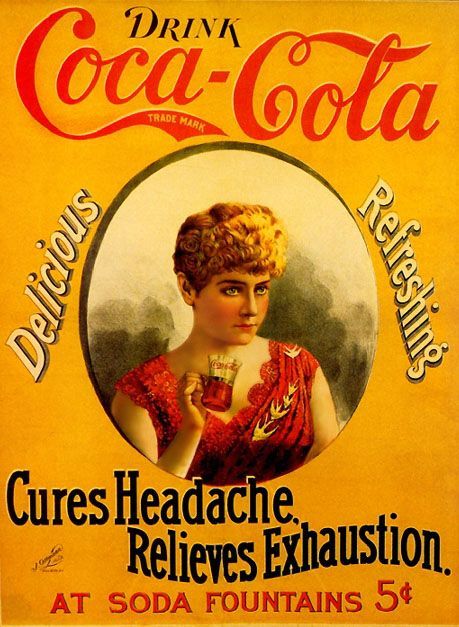

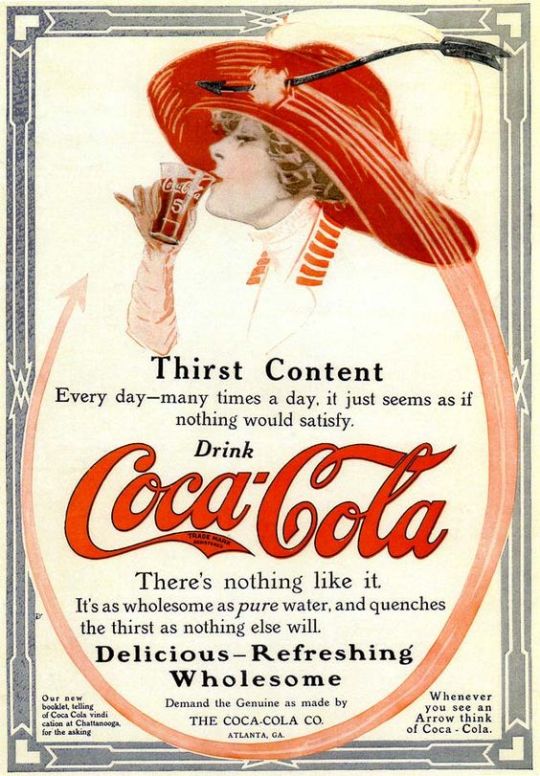
The Cure for “Thinking Too Much”!
Posted on May 28, 2014 by Pamela Starr Dewey
It was well-known in Victorian times that thinking too much was a health hazard for women. What a relief, then, that John Pemberton came to the rescue of the Weaker Sex with his new Miracle Brew that did indeed “Relieve the Fatigue that comes…from Over-thinking” as promised in the advertisement below.
During the late to mid-19th century, medicines promising to cure multiple ailments from “foul breath,” “irregularities incidental to women” and everything in between proliferated. Many times these bogus medicines were mixed with ice-cold carbonated water and served as cheaper and more refreshing alternatives.
In the spring of 1886, John Stith Pemberton, a Confederate army veteran, had created one of the most elusive and important recipes of all time. This Georgian native mixed sugar, water, kola nut extracts, coca leaf extract, and other secret ingredients into a syrupy concoction that would become the base of the world’s most prolific soft drink the world has ever known. Mixed with soda water, the drink was extremely powerful with cocaine from the coca extract and four times the amount of caffeine of the modern syrup mix. The original recipe of 1886 has since been lost in time. Pemberton’s business partner and Union army veteran, Frank Robinson decided to name the new beverage Coca-Cola. The name derived from its initial selling point: “containing the properties of the wonderful Coca Plant and the famous Cola nuts.” At the time of the drink’s inception, cocaine was a commonly used substance, but was later near-completely eliminated in 1903. [Source]
In the 1880s and 90s, the company utilized lithographs of the young, beautiful, and wealthy. Giving the impression that anyone who was willing to spend a measly five cents could live like the rich for the time it took to enjoy a glass of Coca-Cola. [ibid]
Yes, even if you couldn’t afford the type of shopping trips of the beautiful and wealthy young ladies shown above, you could window-shop-‘til-you-dropped, and then stop by the soda fountain to be “revived and sustained”–and imagine yourself chatting over your glass of Coca Cola with the Rockefellers and Carnegies…before going home to your tenement!
At first the models for the Coke ads were anonymous beautiful and wealthy young ladies. But it didn’t take long for the Coca-Cola company to realize the value of celebrity endorsements.
Singer Hilda Clark became the first celebrity model for The Coca-Cola Company. Also known as the First Coca-Cola Girl, Hilda’s image was used on cardboard signs, tin trays, trade cards, bookmarks, drink tickets, and calendars from 1899 to 1903. [Source]
The many moods of Hilda Clark, from prim and proper to a tad sultry graced Coke ads for several years.
Coke calendars became wildly popular around the turn of the century, and Hilda loaned her pretty face and poofy hair to those too.
I don’t know what happened to Hilda, but by 1904 she was replaced by a more regal celebrity.
From 1904 to 1905, Lillian Nordica became the new face of Coca-Cola. Born Lillian Norton in 1857 in Farmington, Maine, Madame Nordica was also a singer who had performed with the Metropolitan Opera in New York, as well as in many major musical venues in Western Europe and Russia. Early calendars and other promotional items featuring the divas of the time not only launched the popular Coca-Cola Girls advertising platform but Clark and Nordica items had also become some of the greatest hits with vintage Coca-Cola collectors over the years. [ibid]
It would be almost 30 years later before Coke introduced the ultimate celebrity endorser, shown here in 1932 in his very first appearance in a Coke ad.
https://ameripics.wordpress.com/2014/05/28/the-cure-for-thinking-too-much/
7 notes
·
View notes
Text
A Brief Story Of Coca Cola
Coca cola original taste was created in 1886 by a pharmacist named John Pemberton. According to the Coca-Cola Company's website, Pemberton created the syrup for Coca-Cola by mixing sugar, caffeine, and a few other ingredients, including the African kola nut and the South American coca leaf. He then added carbonated water to the syrup to create the iconic soft drink. Pemberton initially marketed Coca-Cola as a patent medicine that could cure a variety of ailments, but it quickly became popular as a refreshment beverage.
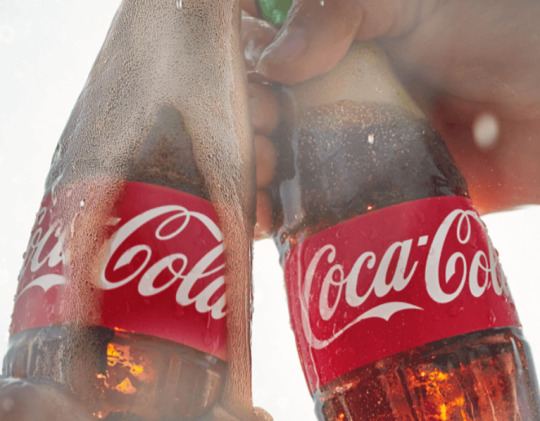
Since then the Coca Cola family has become much bigger. Coca-Cola is one of the world's most popular and best-selling soft drinks. Some of the company's top selling products include coca cola original taste, Diet Coke, Coke Zero, Fanta, Sprite, and Dasani. These products are available in various flavors and sizes, and are enjoyed by people of all ages around the world.
2 notes
·
View notes
Text
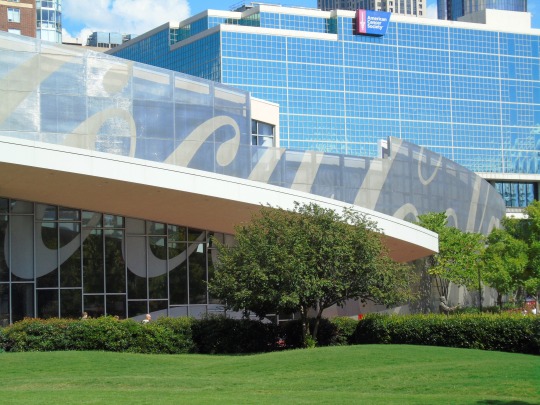
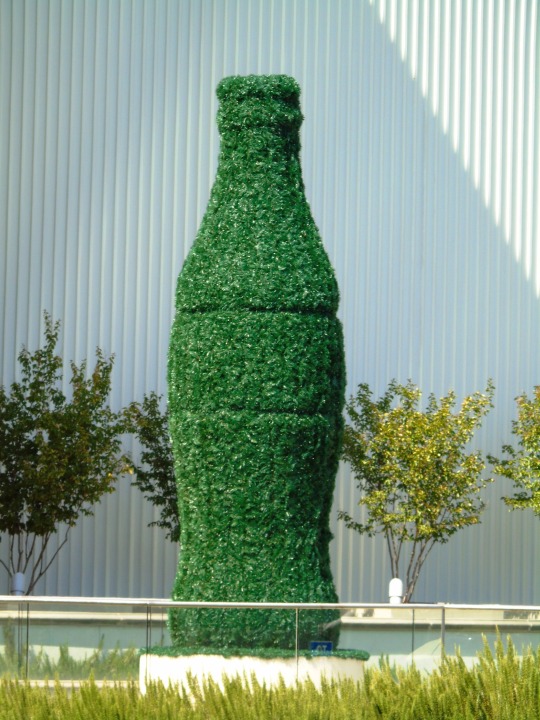

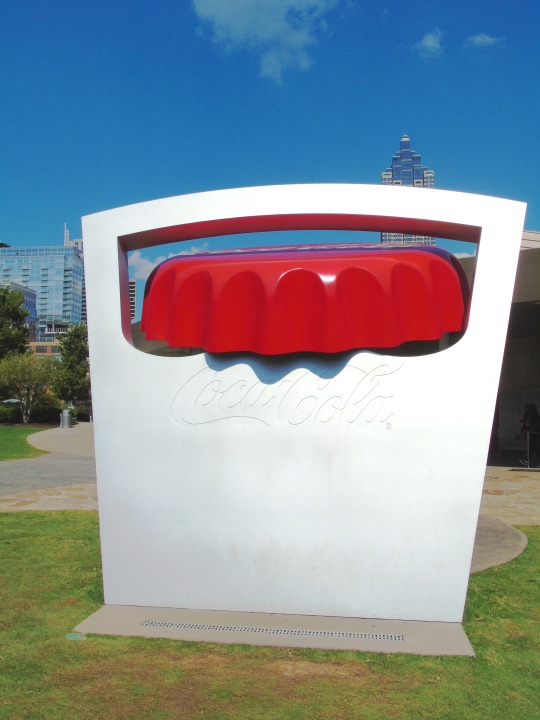
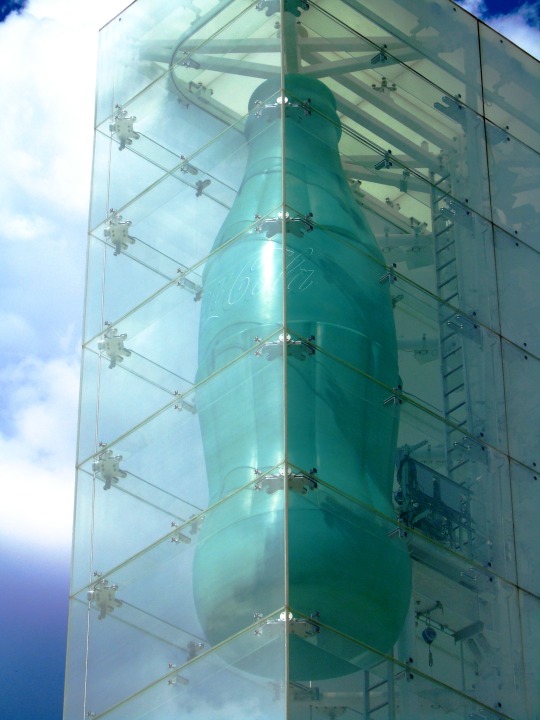

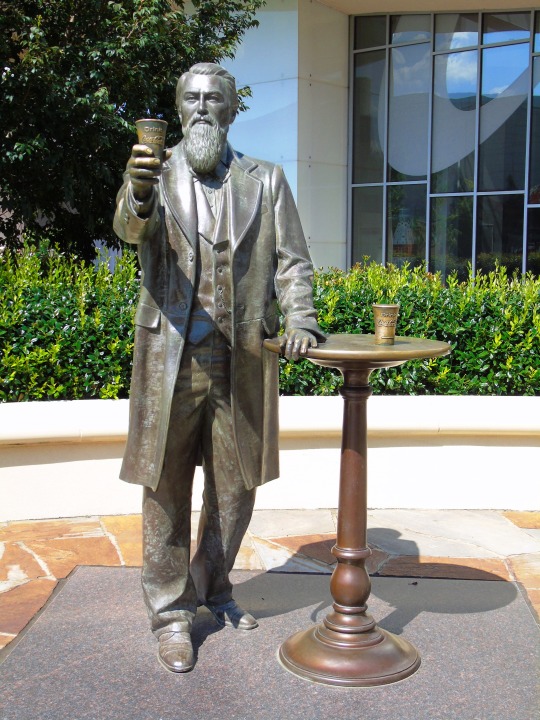








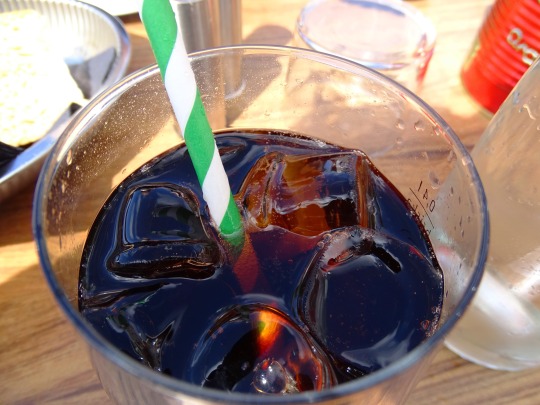

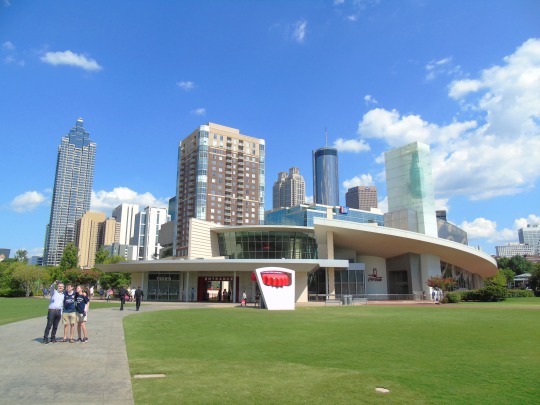
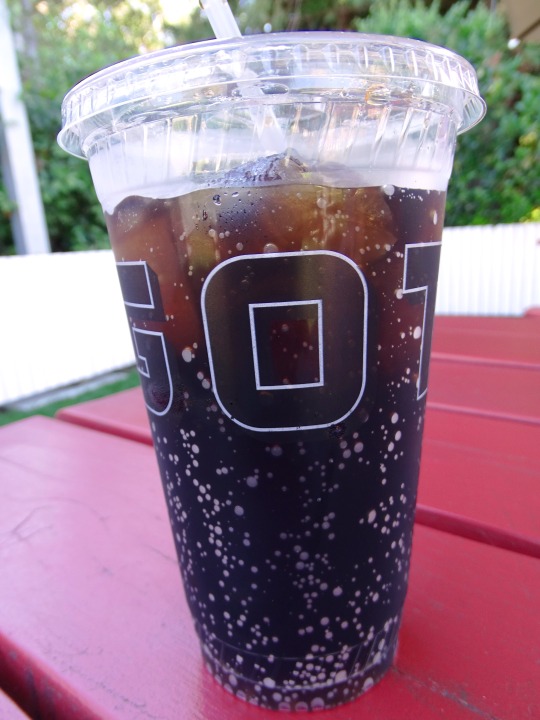

The Coca-Cola Company, then known as the Pemberton Medicine Company, was incorporated in Atlanta on January 15, 1889.
#Coca-Cola Company#Pemberton Medicine Company#incorporated#Atlanta#15 January 1889#135th anniversary#US history#soft drink#Georgia#vacation#Centennial Olympic Park#World of Coca-Cola#original photography#USA#summer 2016#tourist attraction#landmark#architecture#cityscape#Gott's Roadside#St. Helena#California#John Pemberton by Russ Faxon#Paradise#Las Vegas Strip#travel
3 notes
·
View notes
Text
How to make Soft Drinks Part 1
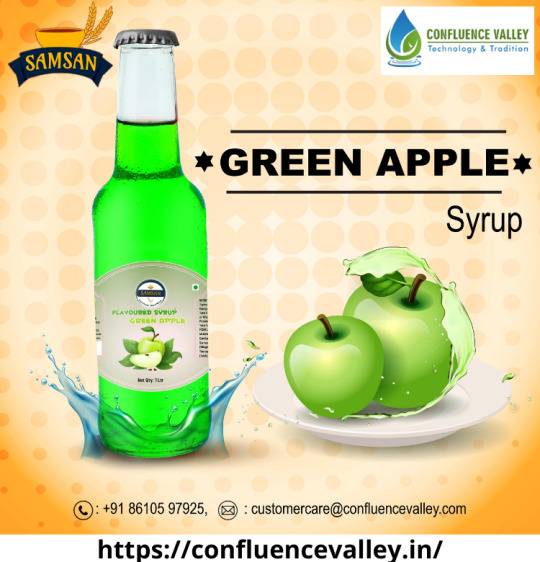
Soft drinks are enormously popular beverages consisting primarily of club soda, sugar, and flavourings. Nearly 200 nations enjoy the sweet, sparkling soda with an annual consumption of quite 34 billion gallons. Soft drinks shops rank as America's favourite beverage segment, representing 25% of the full beverage market. within the early 1990s per capita consumption of sentimental drinks within the U.S. was 49 gallons, 15 gallons over the subsequent most well-liked beverage, water.
The roots of sentimental drinks are history. Two thousand years ago Greeks and Romans recognized the medicinal value of drinking water and bathed in it for relaxation, a practice that continues to this. within the late 1700s, Europeans and Americans began drinking sparkling drinking water for its reputed therapeutic benefits. the primary imitation drinking water within the U.S. was patented in 1809. it was called "soda water" and consisted of water and saleratus mixed with acid to feature effervescence. Pharmacists in America and Europe experimented with myriad ingredients within the hope of finding new remedies for various ailments. Already the flavoured soda waters were hailed as brain tonics for curing headaches, hangovers, and nervous afflictions.
Pharmacies equipped with "soda fountains" featuring the medicinal soda water soon developed into regular meeting places for local populations. Flavoured soda water gained popularity not just for medicinal benefits except for the refreshing taste moreover. The market expanded within the 1830s when soda water was first sold in glass bottles. Filling and capping the gaseous liquid in containers was a difficult process until 1850 when a manual filling and corking machine was successfully designed. The term "soda pop" originated in the 1860s from the popping sound of escaping gas as a pop bottle was opened.
New soda flavours constantly appeared on the market. a number of the more popular flavours were soft drinks in India, sarsaparilla, root beer, lemon, and other fruit flavours. within the early 1880s pharmacists experimented with powerful stimulants to feature soda water, including cola nuts and coca leaves. They were inspired by Bolivian Indian workers who chewed coca leaves to keep at bay fatigue and by West African workers who chewed cola nuts as a stimulant. In 1886 an Atlanta pharmacist, John Pemberton, took the fateful step of mixing coca with cola, thus creating what would become the world's most famous drink, "Coca-Cola". The beverage was advertised as refreshing also as therapeutic: "French Wine Cola—Ideal Nerve and Tonic Stimulant." some years later another pharmacist, Caleb Bradham, created "Pepsi-Cola" in North Carolina. Although the name was a derivation of pepsin, an acid that aids digestion, Pepsi didn't advertise the beverage as having therapeutic benefits. By the first 20th century, most cola companies focused their advertising on the refreshing aspects of their drinks.
As flavoured carbonated beverages gained popularity, manufacturers struggled to seek out an appropriate name for the drinks. Some suggested "marble water," "syrup water," and "aerated water." the foremost appealing name, however, was "soft drink," adapted within the hopes that soft drinks list would ultimately supplant the "hard liquor" market. Although the concept never stuck, the term potable did.
Until the 1890s soft drinks were produced manually, from blowing bottles individually to filling and packaging. During the subsequent 20 years, automated machinery greatly increased the productivity of soppy drink plants. Probably the foremost important development in bottling technology occurred with the invention of the "crown cap" in 1892, which successfully contained the carbonic acid gas in glass bottles. The crown cap design endured for 70 years.
The advent of automobiles spawned further growth within the drinkable industry. Vending machines, serving soft drinks in cups, became regular fixtures at service stations across the country. within the late 1950s, aluminium beverage cans were introduced, equipped with convenient pull-ring tabs and later with stay-on tabs. Light-weight and break-resistant plastic bottles came into use within the 1970s, though it had been not until 1991 that the potable industry used plastic PET (polyethene terephthalate) on a good scale.
Soft drink India manufacturers are quick to reply to consumer preferences. In 1962 diet colas were introduced in response to the style of thinness for ladies. within the 1980s the growing health consciousness of the country led to the creation of caffeine-free and low-sodium soft drinks. The 1990s ushered in clear colas that were colourless, caffeine-free, and preservative-free.
0 notes
Text
Events 1.15 (before 1940)
69 – Otho seizes power in Rome, proclaiming himself Emperor of Rome, beginning a reign of only three months. 1541 – King Francis I of France gives Jean-François Roberval a commission to settle the province of New France (Canada) and provide for the spread of the "Holy Catholic faith". 1559 – Elizabeth I is crowned Queen of England and Ireland in Westminster Abbey, London. 1582 – Truce of Yam-Zapolsky: Russia cedes Livonia to the Polish–Lithuanian Commonwealth. 1759 – The British Museum opens to the public. 1777 – American Revolutionary War: New Connecticut (present-day Vermont) declares its independence. 1782 – Superintendent of Finance Robert Morris addresses the U.S. Congress to recommend establishment of a national mint and decimal coinage. 1815 – War of 1812: American frigate USS President, commanded by Commodore Stephen Decatur, is captured by a squadron of four British frigates. 1818 – A paper by David Brewster is read to the Royal Society, belatedly announcing his discovery of what we now call the biaxial class of doubly-refracting crystals. On the same day, Augustin-Jean Fresnel signs a "supplement" (submitted four days later) on reflection of polarized light. 1822 – Greek War of Independence: Demetrios Ypsilantis is elected president of the legislative assembly. 1865 – American Civil War: Fort Fisher in North Carolina falls to the Union, thus cutting off the last major seaport of the Confederacy. 1867 – Forty people die when ice covering the boating lake at Regent's Park, London, collapses. 1870 – A political cartoon for the first time symbolizes the Democratic Party with a donkey ("A Live Jackass Kicking a Dead Lion" by Thomas Nast for Harper's Weekly). 1876 – The first newspaper in Afrikaans, Die Afrikaanse Patriot, is published in Paarl. 1889 – The Coca-Cola Company, then known as the Pemberton Medicine Company, is incorporated in Atlanta. 1892 – James Naismith publishes the rules of basketball. 1908 – The Alpha Kappa Alpha sorority becomes the first Greek-letter organization founded and established by African American college women. 1910 – Construction ends on the Buffalo Bill Dam in Wyoming, United States, which was the highest dam in the world at the time, at 99 m (325 ft). 1911 – Palestinian Arabic-language Falastin newspaper founded. 1919 – Rosa Luxemburg and Karl Liebknecht, two of the most prominent communists in Germany, are clubbed and then shot to death by members of the Freikorps at the end of the Spartacist uprising. 1919 – Great Molasses Flood: A wave of molasses released from an exploding storage tank sweeps through Boston, Massachusetts, killing 21 and injuring 150. 1934 – The 8.0 Mw Nepal–Bihar earthquake strikes Nepal and Bihar with a maximum Mercalli intensity of XI (Extreme), killing an estimated 6,000–10,700 people. 1936 – The first building to be completely covered in glass, built for the Owens-Illinois Glass Company, is completed in Toledo, Ohio. 1937 – Spanish Civil War: Nationalists and Republicans both withdraw after suffering heavy losses, ending the Second Battle of the Corunna Road.
0 notes
Photo

Every company has a logo - the emblem that is commonly seen on their products, advertisements, and even in their workplace. These logos are often created with an underlying meaning or story to tell. The Coca-Cola Company's logo, for example, was inspired by its original name "Pemberton Medicine". The letter "K" in the word "Coca-Cola" is meant to resemble the curves of the "k" in "Pemberton.
Follow Us Postlistd: https://postlistd.com/ads/do-modern-unique-and-beautiful-corporate-logo-design/
Order Now Fiverr: https://www.fiverr.com/share/PxVR4A
0 notes
Text
Coca-Cola South Africa Recruitment 2021/2022 And How To Apply
Coca-Cola South Africa Recruitment 2021/2022 And How To Apply
Coca-Cola, or Coke, is a carbonated soft drink manufactured by The Coca-Cola Company. Originally intended as a patent medicine, it was invented in the late 19th century by John Stith Pemberton and was bought out by businessman Asa Griggs Candler, whose marketing tactics led Coca-Cola to its dominance of the world soft-drink market throughout the 20th century. We are recruiting to fill the…

View On WordPress
0 notes
Text
3 BRILLIANT BRAND STORYTELLING EXAMPLES - EVERY MARKETER MUST KNOW
In a fast-paced and crowded marketplace, it can be difficult to break through the noise and capture attention. That’s where storytelling comes in. When done well, brand storytelling can be an incredibly effective marketing tool. It can help you connect with your audience on a deeper level, fostering loyalty and trust.
There are endless possibilities when it comes to brand storytelling. In this blog post, we will explore three examples of brilliant brand storytelling that you may have missed. We’ll examine what made these stories so captivating and explore some key takeaways that you can apply to your marketing efforts. So let’s get started!
What is brand storytelling? Why is important?
Brand storytelling is a powerful marketing tool that can help companies improve consumer engagement. It involves using basic video production techniques to create stories about a brand, its products, and its customers. These stories create an emotional connection between the company and its viewers, allowing for a more meaningful and lasting bond.
Moreover, brand storytelling helps to build trust in the brand by creating an environment of transparency; customers can see whom the people behind the product are, providing them with a better understanding of what makes a brand unique.
Through brand storytelling, companies can establish an organic relationship with their customers, which can lead to increased loyalty, and longer-term customer relationships. By communicating one’s message through visuals rather than text alone, companies can create content that transcends language barriers and reaches audiences beyond traditional markets.
Ultimately, branding through storytelling is an essential part of modern business success; it allows companies to activate their core target audience while also introducing their product or service to new generations of potential customers.
Three examples of brands that have done an excellent storytelling job
Examples of brands that have done an excellent storytelling job include Apple, Nike, and Coca-Cola.
1. Apple
Apple is a brand that is known for its innovative and cutting-edge products. To introduce its new line of iPhones, Apple released a powerful brand storytelling video called “The Human Family.” The video tells the story of a family made up of different races and cultures who are all connected by their love for one another.
The video was incredibly moving and resonated with viewers around the world. It was praised for its positive message and its ability to break down barriers.
2. Nike
Nike is a brand built on the principle of self-belief. In order to communicate this message to its consumers, Nike often tells stories about regular people who have achieved great things through determination and hard work.
One such story is about a young man named Matthew Walzer who, at the age of 18, wrote a letter to Nike asking for help in designing customized shoes for his Cerebral Palsy. Nike responded by creating a one-of-a-kind sneaker for Walzer that gave him the independence to move more easily. This story communicates the Nike message that if you want something badly enough and are willing to work for it, you can achieve anything.
3. Coca-Cola
Coca-Cola is a brand that has been around for over 130 years and has built up an incredibly loyal following. One of the reasons for its success is its ability to tell compelling brand stories. An example of that is the story about the origins of Coca-Cola.
The story goes that back in 1886, Coca-Cola was created by a pharmacist named John Pemberton. The original creation was a patent medicine called Pemberton’s French Wine Coca. The drink became popular during prohibition because it helped people stay awake and function well despite the ban on alcohol. As Coca-Cola grew in popularity, it began to be marketed as a refreshing beverage that could be enjoyed by everyone.
This story showcases the history and origins of Coca-Cola while also communicating the brand’s core values: happiness, refreshment, and unity.
How other brands can improve their storytelling efforts
It’s undeniable that storytelling is a powerful tool for connecting consumers to a brand. However, many brands make basic mistakes when trying to tell their story.
For example, some attempts at video production are too basic or unpolished, resulting in negative impressions from viewers. While basic video production is a tool available to small businesses, large corporations should try to invest more in the quality of the videos they release to showcase their products and stories. Alternative options that are worth considering include boosting production values with animation techniques and investing in professional scripts.
Furthermore, using customer testimonials rather than relying on published reviews can help to build trust between companies and potential customers. By improving basic production values and incorporating important elements such as real stories, other brands can learn from successful examples and develop better storytelling efforts of their own.
Ultimately, this will result in more meaningful connections with existing and potential consumers. Using other techniques such as excellent customer service will provide a platform for people truly interested in understanding and engaging with your brand’s story. This model ensures greater sustainability and loyalty over time.
By changing the perception of a brand from an outside force into an involved storyteller, you can provide your audiences with a richer experience that will draw them closer and create long-lasting relationships with them through your story.
These strategies offer countless opportunities for other brands to re-imagine their storytelling strategies to draw attention directly from customers for engaging content that helps build a satisfying connection between consumers and the company’s character or the story surrounding it.
Successful storytelling involves giving each individual within your target audience something worthwhile that they can connect with emotionally or intellectually; this will help foster loyalty with those customers far into the future.
How your brand can tell its own unique story?
In today’s digital world, brands must be able to tell stories that capture the audience’s attention. Indeed, video content is one of the most effective forms of communication, enabling businesses to communicate their message quickly and effectively. However, it can be a challenge to create videos that are engaging and away from basic production techniques.
To overcome this challenge, brands must tap into creative minds by involving talented individuals who understand how a story can be told in unique ways. Further research and experimentation should also be invested to explore different strategies with which they can develop content that stands out and creates an emotional connection with their audience.
Brands need to think seriously about what kind of story they want to tell and how they will deliver this information in the most captivating way possible. By taking these steps now, corporations can ensure that tomorrow they remain relevant and impactful in the everevolving digital landscape.
As such, it is crucial for brands—large and small—to start thinking strategically about how they tell their own unique story through basic video production techniques. With creativity and experimentation as foundations, companies can uncover fresh ways of developing engaging and captivating visuals that build relationships with consumers and drive increased sales over time.
In short: start telling your story today! No matter what channels you’re using or what product/service you sell, there is value in having a personality that carries from your story through customer purchases. Doing so will set you apart from competitors who have yet to tap into powerful visual storytelling capabilities designed for the modern age. As such, we urge all brands—big or small—to take advantage of visual storytelling tactics now before it’s too late!
Conclusion
Brand storytelling is an important way for brands to connect with their customers on a deeper level. By sharing their unique story, brands can build trust and rapport with their target audience. There are many different ways to tell a brand story, and the three examples we’ve shared show just a few of the possibilities. Other brands can learn from these examples and start thinking about how they can improve their storytelling efforts.
If you’re not sure where to start, our team of experts can help you create a brand story that resonates with your target audience and helps you achieve your business goals. Ready to get started? Contact us today!
Website : https://www.krowmedia.com/sblogs/3-brilliant-brand-storytelling-examples-for-marketers/
0 notes
Photo






Coca-Cola
In 1886, when prohibition laws were passed in some locations, John Pemberton developed Coca-Cola -- a non-alcoholic version of his previous French Wine Coca.
Initially, Pemberton sold Coca-Cola as a patent medicine for 5 cents per glass near soda fountains; he claimed Coca-Cola could cure diseases like headache, morphine addiction, and impotence.
Starting in 1894, Coca-Cola was starting to be sold in bottles, and advertised the product on outdoor walls. (more...)
An early Coca-Cola advertisement 👇

Use of stimulants in formula
When launched, Coca-Cola's two key ingredients were cocaine and caffeine. The cocaine was derived from the coca leaf and the caffeine from kola nut (also spelled "cola nut" at the time), leading to the name Coca-Cola.[69][70]
Coca leaf
Pemberton called for five ounces of coca leaf per gallon of syrup (approximately 37 g/L), a significant dose; in 1891, Candler claimed his formula (altered extensively from Pemberton's original) contained only a tenth of this amount. Coca-Cola once contained an estimated nine milligrams of cocaine per glass. (For comparison, a typical dose or "line" of cocaine is 50–75 mg.) In 1903, it was removed.
After 1904, instead of using fresh leaves, Coca-Cola started using "spent" leaves – the leftovers of the cocaine-extraction process with trace levels of cocaine. Since then (by 1929 ), Coca-Cola has used a cocaine-free coca leaf extract. Today, that extract is prepared at a Stepan Company plant in Maywood, New Jersey, the only manufacturing plant authorized by the federal government to import and process coca leaves, which it obtains from Peru and Bolivia. Stepan Company extracts cocaine from the coca leaves, which it then sells to Mallinckrodt, the only company in the United States licensed to purify cocaine for medicinal use.
Long after the syrup had ceased to contain any significant amount of cocaine, in North Carolina "dope" remained a common colloquialism for Coca-Cola, and "dope-wagons" were trucks that transported it.

https://en.wikipedia.org/wiki/Coca-Cola#Advertising
https://www.vintageadbrowser.com/coke-ads-1920s

0 notes
Text
#MorningMonarchy: January 15, 2021
#MorningMonarchy MP3: #January15 w/#MediaMemes/#MagazineTime + #ThisDayInHistory, #TruthMusic by #KhemtrailFrank & much more
https://mediamonarchy.com/wp-content/uploads/2021/01/20210115_MorningMonarchy.mp3 Download MP3 Dying illusions, glorifying killers and banning books + this day in history w/the Pemberton Medicine Company and our truth music of the day by Khemtrail Frank and the Natural Free Human Beings on your #MorningMonarchy for January 15, 2021. Notes/Links: Dawn Wells, Mary Ann on ‘Gilligan’s Island,’ dies…

View On WordPress
0 notes
Photo





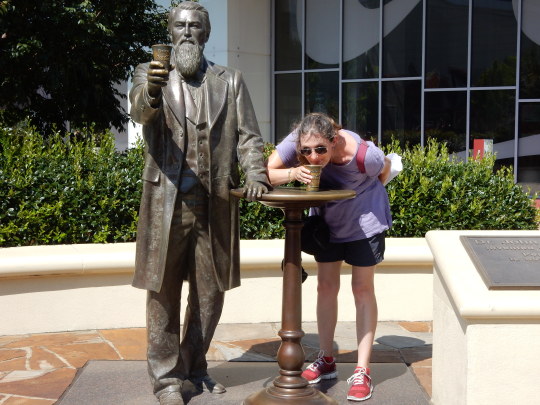




National Have a Coke Day
“Drink Coca-Cola,” “It’s the Real Thing,” “Taste the Feeling,” and a tune with the words “I’d Like to Buy the World a Coke"—these slogans all may have influenced you to drink a Coke over the years. But there are no phrases that are needed to get you to drink a Coke today, because it is National Have a Coke Day!
John Stith Pemberton invented a cola syrup at his Eagle Drug and Chemical house in Columbus, Georgia. He brought it to Jacob’s Pharmacy in Atlanta and mixed it with carbonated water to make the first cola drink, and it was introduced to the world on May 8, 1886. Both Columbus and Atlanta have since laid claim to the creation of the drink. It was originally sold as a health drink or medicine, for getting rid of hangovers and headaches.
The name Coca-Cola was thought up by Pemberton’s bookkeeper, Frank M. Robinson. The name stemmed from two of the drink’s ingredients: coca leaves and kola nuts. Coca leaves, which are grown in South America, are a stimulant which cocaine is derived from. In fact, Coca-Cola had trace elements of cocaine in it until around the turn of the twentieth century. Today, a non-narcotic coca leaf extract is still used in Coca-Cola. Kola nuts gave the drink its caffeine.
In 1891, Asa Griggs Candler bought the rights to Coca-Cola and began selling it as a refreshment instead of a medicinal aid. At the time, it was sold only as a fountain drink, but shortly thereafter began being bottled. In 1909, it began being called Coke, but it wasn’t until 1944 that “Coke” became a registered trademark of the Coca-Cola Company. The drink became widely popular after World War I, as this was a time when soft drinks were rising in popularity in general, sugar prices were cheap, and advertising and marketing increased.
Today the drink is distributed in most countries. It first began being sold in cans in 1955, and numerous other types of Coke have been sold, the most popular being Diet Coke. Besides being used for drinking, Coke can be used for cleaning and cooking, often being used to make cakes, and with meats and sauces.
How to Observe
Celebrate the day by having a Coke! Besides drinking it, you could use it in a recipe, or for cleaning and numerous other purposes. The day could also be spent by visiting the World of Coca-Cola museum, or by reading For God, Country, and Coca-Cola by Mark Pendergrast.
Source
Pharmacist John Pemberton first sold a carbonated beverage named “Coca-Cola” as a patent medicine on May 8, 1886.
#John Pemberton by Russ Faxon#Coca-Cola Company#World of Coca-Cola#tourist trap#Coca-Cola#original photography#Centennial Olympic Park#National Have a Coke Day#8 May 1886#anniversary#US history#Atlanta#Georgia#Gott's Roadside#St. Helena#California#summer 2016#2022#cityscape#architecture#tourist attraction#landmark
0 notes